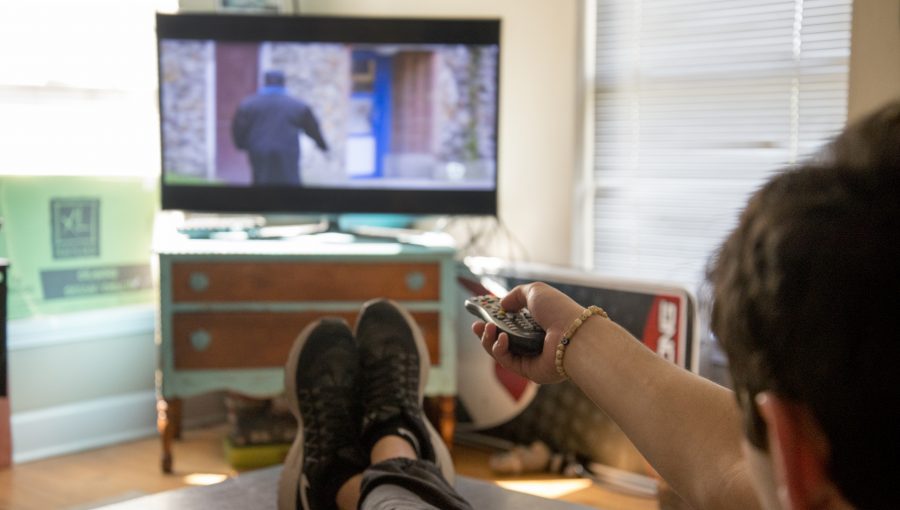Many college students are on tight budgets and look for any way they can to save money. And for some students, a once-common utility is falling by the wayside: cable.
With the rise of streaming services like Netflix, Hulu and Amazon Prime Instant Video, students now have inexpensive options for watching television that don’t involve using a conventional hookup. Because these online services also create their own programming, users can also enjoy a wider variety of television content.
“In today’s inter-networked world, you search for something and pull it to you,” said Jeremy Butler, a television studies professor here at UA. “If you want to watch an old Seinfeld episode, you go to YouTube or Hulu and you say, ‘Send me that.’”
Butler discussed the shift in the status quo of television that has occurred in the past decade or so. He spoke about how television has gone from a “push” activity to becoming a “pull” activity. When you log into Netflix, you can search for the specific TV shows and movies you would like to watch. You can search for a specific episode within a series, or even fast-forward or rewind to a specific time in that episode.
“I think kids place a heavy influence on cost when it comes to choosing cable or online streaming. I think an added benefit of online streaming is the seemingly endless amount of TV series and movies that are included in the monthly subscription,” said Adrienne Cumming, a senior majoring in Public Health. “When I move to Mobile for grad school, I do not plan on purchasing cable. I am satisfied with the options on Netflix, and do not need the added cost.”
However, according to telecommunication and film student Elliot Panek, there may be more to the conversation of cable television versus streaming content than just the costs. As college students, scheduling also plays a larger role in that conversation.
“In terms of millennials, college students and young people have these flexible schedules, even traditionally twenty years ago before streaming, they didn’t watch much television anyway,” said Panek. “So I think, aside from the fact that they’re just adopters of technology, they also have flexible schedules and they don’t tend to subscribe to cable.”
Students like to go to their apartments and dorms in between classes and watch singular episodes of their favorite shows, and not have to worry about missing the beginning or the end of the episodes.
Traditional television still has some advantages, however.
“I don’t think television will ever die. Yes, Netflix is awesome and cheap, but it’s not live. You can’t watch live news or sports or even TV premieres,” said Gueret. “Someone would argue about internet outlets as a way to get news, but convenience is key. Most mornings I turn on the news while getting ready, and I assume I’m not the only one that does that.”
Live sports are another area where the big three streaming services come up short. However, the WatchESPN App and CBSSports App are now options for cell phones and computers to watch live sports.
“There’s still a desire to share an experience simultaneously with someone else,” said Panek. “It’s amazing how reliant the entire economic structure of cable television depends on sports and the exclusivity of sports. If the NFL or the NCAA signs a deal with Google or Yahoo, which they might, the whole thing might collapse.”
According to Butler, it has become more of a practice to use friends’ or parents’ streaming services instead of having to pay for a personal account. Panek said streaming services are taking advantage of this practice.
“Now I think they like this idea of more and more people getting hooked,” he said. “Why not spread this thing around, so that you get in the habit of watching Amazon or HBO or whatever?”
Then there are students that have determined that they would like to take advantage of the bundling aspect, and capitalize on the pros of having both cable television and streaming services, such as sophomore journalism major Aimee Gueret.
“Currently, where we live the cable and internet is included. But for next year, we talked about getting a bundle of both cable/internet with the least amount of channels since we mostly use Netflix. But we’d want cable for news and sports,” said Gueret. “We made a list of wants and needs for our house and internet was a need while cable was a want.”
This generation will have a large impact on the industry within the next decade or so. The notion that television will die out is not final. Streaming services have changed the game in the television industry, but they have far from slowed it down.
“People have predicted for years that the theaters would die out, because everybody has all this access to movies at home. But they haven’t, because people still want to be able to go out for nice entertainment or with friends,” said Butler. “I don’t think we’re heading into a paradise of everything being available any time we want for free.”









